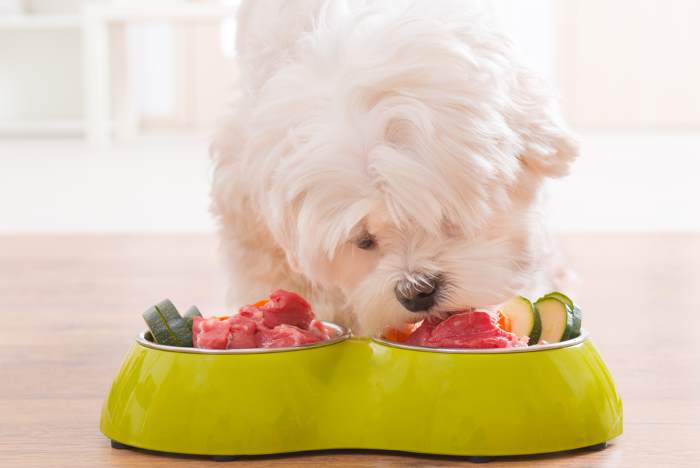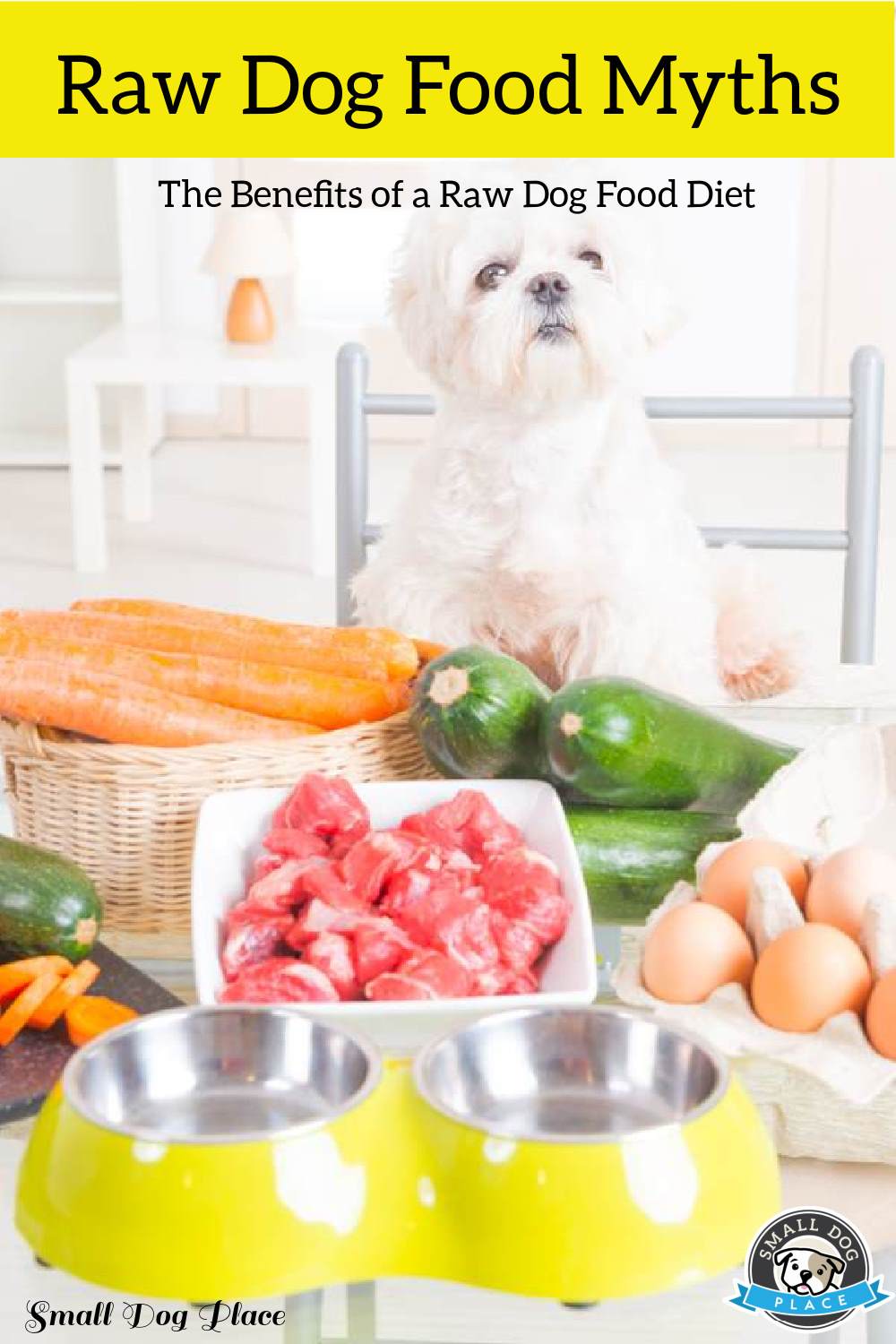Raw Dog Food Myths:
Bust Those Myths!
Raw Dog Food Myths |Published 09-21-2020
This article is written by one of the specialists at ProDog Raw, one of the leading providers of Raw Dog Food in the UK
Raw feeding for dogs has got to be the hottest topic in the canine world at the moment.
As the fastest growing sector in pet food, we wanted to delve a bit deeper into this seemingly new way of feeding our best friends. Here we look at some of the beliefs surrounding raw feeding and see if we can bust them!
 4 Raw Dog Food Myths You Should Know
4 Raw Dog Food Myths You Should KnowRaw Dog Food Myths
#1 Raw Dog Food Myth: There could be harmful bacteria in raw dog food!
A brilliant poster created by the Pet Food Manufacturers Association (PFMA), the leading organisation in pet food manufacturing, shows just how easy it can be to avoid this pitfall by practicing home hygiene when handling raw pet food. After all, it is meat, in a raw state, and just as we wash our hands and surfaces after handling our own meat foods, we must do the same with raw pet food.
After years evolving as scavengers, a dog’s stomach is much stronger than ours; the strong acidity kills off bacteria we wouldn’t handle if we were to eat raw meat ourselves.
Always purchase your dog’s raw food from a Defra approved supplier. These suppliers take measures to ensure any bacteria levels meet safe industry standards.
Finally, a benefit of feeding raw is fussiness is solved almost overnight – in 25 years of feeding raw, I’ve rarely seen a dog leave raw dog food in their bowl. Pick up the bowl and wash it as soon as they have eaten. Simple. No little members of your human family will get close to it!
Sadly despite the high heats and sterilisation techniques adopted by the dry pet food industry, it is quite common for those dry pet foods to have recalls on harmful bacteria. Once a bag is opened and exposed to the air, even if the food is left in the bowl for some time, bacteria begin to spread. There can be no guarantee dry pet food is bacteria-free.
#2 Raw Dog Food Myth: My dog couldn’t eat raw food; they have a sensitive stomach!
Briefly mentioned above, a healthy canine stomach should have a strong acidity. This ensures they can kill off harmful bacteria in the food they have scavenged, or indeed in raw meat.
Unfortunately, without fresh, real food and a good bone and mineral content in their food, your dog’s stomach won’t function as it should do, and this can result in a lack of stomach acid to do that job. Thus, a dog fed processed foods (dry, canned, or plastic tray versions) can quickly develop what appears to be a sensitive, bacteria prone stomach.
In reality, biologically, this has happened due to unnatural, processed foods. The truth is a dog’s stomach is a swift healing organ. For many dogs, even one meal of raw shifts these issues, your dog’s sensitive stomach can be a thing of the past!
A slight bacteria detox in the symptom of a mild runny stool is about the extent of canine transitions to real, raw meat foods.
#3 Raw Dog Food Myth: Raw feeding is unbalanced, complicated, and expensive!
Ready-made Complete, and Balanced raw dog meals take the hassle out of raw feeding. Simply thaw the food in your dog’s food bowl, and serve when defrosted. Easy.
These ready-made meals are economical for all but the biggest of canine households.
It becomes even more economical to make up the meals at home using minced pet-food meats and offal. Adding optional, raw meaty bones, fruits, or plants to your dog’s individual tastes or needs.
Many processed dry or tinned dog foods use cheap ingredients such as fillers, grains, and ground, de-fatted meat meals that bring down the cost of feeding dry food. Beneficial probiotics, omega fats, hydration, antioxidants, and enzymes are compromised, often removed entirely during cooing or processing methods.
Those elements are imperative for thriving health, yet they are simply not left in processed foods. This is why feeding raw, real food, reduces trips to the vet.
Owners of dogs eating real food give consistent, repetitive feedback of:
- Reduced flea, tick, or worm treatments needed.
- No more trips to the vet for digestive issues.
- No need for veterinary anal gland expression.
- Reduced skin ailment medications.
- Slower aging and age-related health complaints and many, many more.
Feeding real, raw food actually saves you money. Fact.
#4 Raw Dog Food Myth: Dogs shouldn’t have bones!
Cooked bones are dry, brittle, and crack easily. These have had the water and fat hydration removed during the cooking. These are dangerous for dogs to have in their mouths, stomach, and the rest of their digestive system.
Raw bones are full of hydration and even somewhat bendy at times. They are suitable for all animals biologically capable of digesting and chewing them, including your pet dog. Wild animals eat this way day in day out, without needing veterinarians camped in the forest ‘just in case.’ :)
You may wish to monitor your dog when they are chewing a raw bone. Larger raw bones are useful as leisure bones, that equally provide nutrition, whereas smaller raw bones such as chicken wings or duck necks would generally be part of a meal. For a small dog, a chicken wing can be a meal itself.
It is safe for almost all dogs to swallow, or gulp, a chicken wing whole! This should be avoided with Brachycephalic breeds, and with dogs so little they couldn’t do this, maybe Chihuahuas, for instance. Even six-month-old puppy spaniels can gulp down and digest a raw meaty bone in their stomachs. It is, in fact, what their stomach is biologically designed to do.
Dogs do not have the same level of digestive enzymes in the mouth as we do. For them, digestion is all about the stomach.
Balanced levels of raw bone are included in the ready-made complete raw meals available. Whilst the more advanced raw feeder will feed raw meaty bones, there is no need for you to do this initially if the fears outweigh the intrigue!
Raw Dog Food Myths: Pin for Future Reference
 Raw Dog Food Myths Pin
Raw Dog Food Myths PinDid you find Raw Dog Food Myths Helpful?
About Janice (author and voice behind this site)
Janice Jones has lived with dogs and cats for most of her life and worked as a veterinary technician for over a decade. She has also been a small-breed dog breeder and rescue advocate and holds academic training in psychology, biology, nursing, and mental health counseling. Her work focuses on helping dog owners make informed, responsible decisions rooted in experience, education, and compassion.
When not writing, reading, or researching dog-related topics, she likes to spend time with her six Shih Tzu dogs, her husband, and her family, as well as knitting and crocheting. She is also the voice behind Miracle Shih Tzu and Smart-Knit-Crocheting
Does This Article Deserve Your Thumbs Up?
We always appreciate your support and encouragement. Your thumbs up means so much to us. Please like this article.
If you find this page or any page on Small Dog Place Helpful, or useful in anyway, I'd love it if you would click the small heart found on the bottom right of each page.
You can also share or bookmark this page -- just click on the:

Free Monthly Newsletter
Sign Up for Our Free Newsletter and get our Free Gift to You.
my E-book, The Top 10 Mistakes People Make When Choosing a Dog (and how to avoid them)









